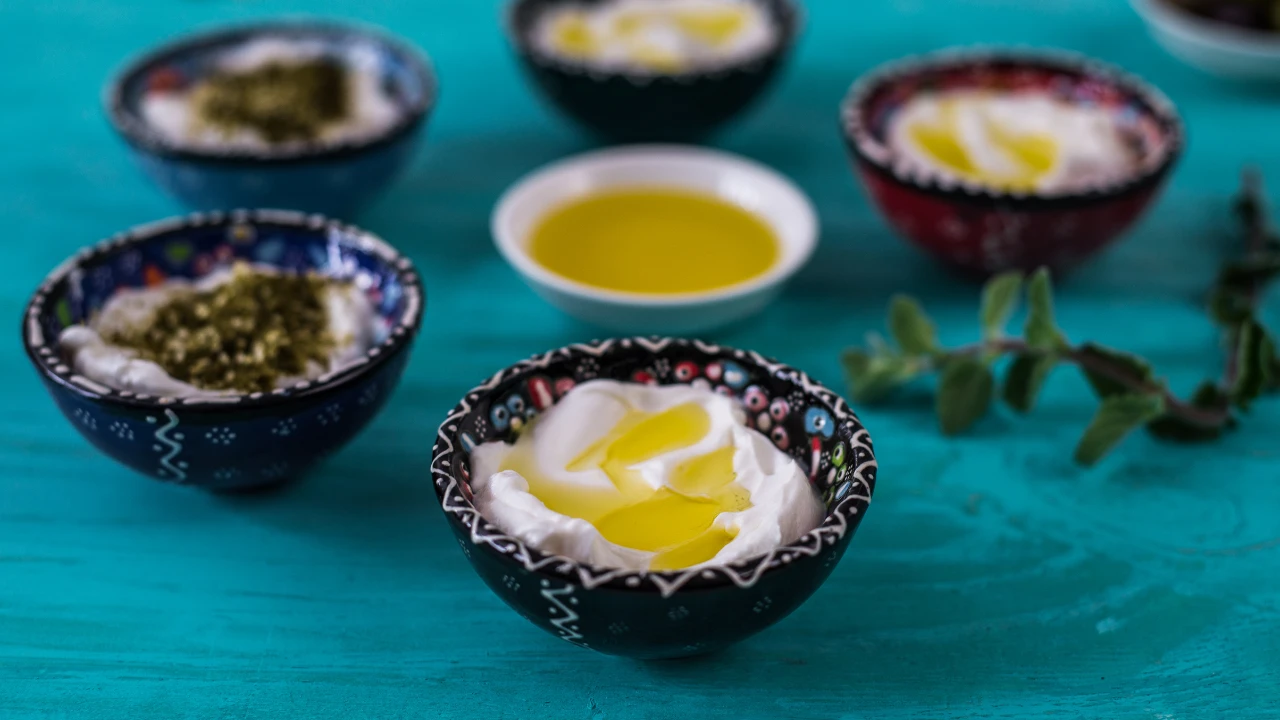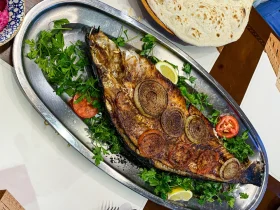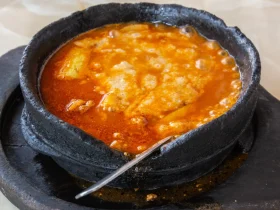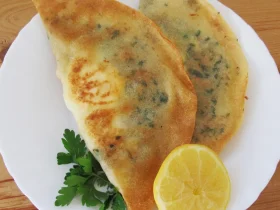Labneh, a delightful Middle Eastern creation, has been gaining popularity globally for its creamy texture and tangy flavor. In this article, we will explore the art of crafting Labneh with a special touch—enhancing it with the richness of olive oil and the aromatic blend of Za’atar.
[ez-toc]
History
I. Introduction
Labneh, a cherished creation in Middle Eastern cuisine, has a history as rich and diverse as its flavors. This strained yogurt cheese traces its roots back centuries, evolving from a traditional method of preserving dairy to becoming a culinary sensation enjoyed worldwide.
II. Early Origins of Labneh
The origins of Labneh can be traced to the Middle East, where nomadic tribes discovered the transformative power of straining yogurt to create a longer-lasting, concentrated product. This method not only preserved dairy in a time before refrigeration but also enhanced its nutritional profile.
III. Labneh Across Cultures
As the Middle East’s culinary influence spread, so did the love for Labneh. It became a staple not only in Middle Eastern households but also in Mediterranean and North African cuisines. Each culture added its own nuances, turning Labneh into a versatile ingredient adaptable to various culinary traditions.
IV. Olive Oil: A Liquid Gold Connection
The pairing of Labneh with olive oil is a marriage of flavors deeply rooted in the Mediterranean region. Olive oil, often referred to as “liquid gold,” has been a dietary cornerstone for centuries, and its synergy with Labneh reflects the region’s commitment to both taste and health.
V. Za’atar’s Aromatic Legacy
Za’atar, a spice blend consisting of herbs like thyme, oregano, and sesame seeds, has a history dating back to ancient times. Used by civilizations like the Egyptians and Romans, Za’atar became a symbol of culinary sophistication, finding its way into Labneh to create a unique flavor profile.
VI. Labneh in Modern Times
Labneh’s popularity transcended regional boundaries in the 20th century, thanks to globalization and increased cultural exchange. The simplicity of making Labneh at home, coupled with its health benefits, contributed to its resurgence in popularity.
VII. Labneh’s Global Acceptance
In recent decades, Labneh has found its way into the kitchens of food enthusiasts worldwide. Its adaptability to various cuisines, coupled with its reputation as a nutritious alternative, has made Labneh a beloved ingredient beyond its Middle Eastern origins.
VIII. Labneh and the Culinary Renaissance
The 21st century brought about a culinary renaissance, with a renewed interest in traditional and authentic recipes. Labneh, with its historical roots and simple yet elegant preparation, became a star in this movement, appealing to those seeking a connection to the past through their plates.
IX. Labneh with Olive Oil and Za’atar: A Modern Twist
The addition of olive oil and Za’atar to Labneh is a testament to the culinary evolution that embraces both tradition and innovation. This modern twist not only enhances the flavor but also pays homage to the historical ties between these ingredients and the regions that inspired them.
X. Labneh’s Continued Legacy
As Labneh with Olive Oil and Za’atar gains popularity globally, it cements its place not just as a recipe but as a cultural ambassador. Its journey through history reflects the resilience and adaptability of culinary traditions, inviting people to savor a slice of the past in a contemporary context.
Time
| Step | Time Required |
|---|---|
| 1. Mix yogurt and salt | 5 minutes |
| 2. Strain using cheesecloth | 12-24 hours |
| 3. Shape into balls or spread in a dish | 10 minutes |
| 4. Drizzle with olive oil | 2 minutes |
| 5. Sprinkle Za’atar | 1 minute |
Note: The total preparation time for Labneh with Olive Oil and Za’atar is approximately 12 to 25 hours, including the straining process.
Ingredients
| Ingredients | Quantity for 2 Persons |
|---|---|
| Greek yogurt | 2 cups |
| Salt | 1/2 teaspoon |
| Cheesecloth | Sufficient for straining |
| Olive oil | Drizzling |
| Za’atar | Sprinkling |
Note: Adjust quantities based on personal preferences and taste preferences.
Directions
Step 1: Prepare Ingredients
Ensure you have all the necessary ingredients: Greek yogurt, salt, cheesecloth, olive oil, and Za’atar.
Step 2: Mix Yogurt and Salt
In a mixing bowl, combine 2 cups of Greek yogurt with 1/2 teaspoon of salt. Stir thoroughly until the salt is evenly distributed.
Step 3: Strain Yogurt with Cheesecloth
Place the yogurt mixture in a cheesecloth and tie it securely. Suspend the cheesecloth over a bowl, allowing the yogurt to strain for 12-24 hours. This step is crucial for achieving the desired thick consistency.
Step 4: Shape Labneh into Desired Form
Once strained, take the Labneh and shape it into balls or spread it in a dish, depending on your preference.
Step 5: Drizzle Labneh with Olive Oil
For a touch of richness, drizzle the Labneh with high-quality olive oil. This not only enhances the flavor but also adds a silky texture.
Step 6: Sprinkle Za’atar on Labneh
To elevate the flavor profile, sprinkle Za’atar generously over the Labneh. This step introduces a delightful aromatic blend to the creamy goodness.
Step 7: Optional – Let Flavors Meld in the Refrigerator
For an intensified taste, refrigerate the Labneh for 1-2 hours, allowing the flavors to meld. This step is optional but recommended for a more developed taste.
Enjoy your homemade Labneh with Olive Oil and Za’atar—a delectable blend of creamy, tangy, and aromatic flavors!
Equipment Required
Nutrition Information
| Nutrition Information | Per Serving (Approximate Values) |
|---|---|
| Serving Size | 2 tablespoons |
| Calories | 70 |
| Total Fat | 5g |
| – Saturated Fat | 2g |
| Cholesterol | 10mg |
| Sodium | 80mg |
| Total Carbohydrates | 3g |
| – Dietary Fiber | 0g |
| – Sugars | 2g |
| Protein | 4g |
Note: Nutritional values may vary based on specific ingredients used and portion sizes.
Tips
- Choose the Right Yogurt: Opt for high-quality Greek yogurt with a rich and creamy texture. This will contribute to the luxurious consistency of your Labneh.
- Mind the Salt: Experiment with the salt quantity based on your taste preferences. Start with a smaller amount and adjust accordingly.
- Invest in Quality Olive Oil: Since olive oil is a prominent flavor, choose a high-quality, extra-virgin olive oil for drizzling. It will enhance the taste and add a velvety touch to your Labneh.
- Be Patient with Straining: The longer you strain the yogurt, the thicker and creamier your Labneh will be. Aim for at least 12 hours for a delightful consistency.
- Get Creative with Shapes: Have fun shaping your Labneh. Create small balls for easy serving or spread it in a dish for a rustic presentation.
- Experiment with Za’atar: Feel free to try different Za’atar blends or even make your own by combining thyme, oregano, sesame seeds, and sumac. This allows you to tailor the flavor to your liking.
- Add Extra Ingredients: Customize your Labneh by incorporating additional ingredients like minced garlic, chopped herbs, or even a touch of lemon zest for extra freshness.
- Try Different Serving Ideas: While traditionally enjoyed as a spread, Labneh can be a versatile addition to various dishes. Explore using it as a dip, a topping for roasted vegetables, or a creamy base for pasta sauces.
- Store Properly: To maintain freshness, store your Labneh in an airtight container in the refrigerator. It can last up to two weeks, allowing you to savor it over time.
- Share the Joy: Labneh with Olive Oil and Za’atar makes a thoughtful and unique gift. Consider gifting small jars with personalized packaging to friends and family.
Pros & Cons
| Pros | Cons |
|---|---|
| ✅ Creamy and Luxurious Texture | ❌ Long Straining Time |
| ✅ Versatile – Suitable for Many Dishes | ❌ Requires Planning Ahead |
| ✅ Healthy Probiotic Content | ❌ Potential High Caloric Content |
| ✅ Customizable with Various Flavors | ❌ Specialty Ingredients Needed |
| ✅ Makes a Unique and Thoughtful Gift | ❌ Not Instant – Requires Patience |
Conclusion
In the realm of culinary delights, Labneh with Olive Oil and Za’atar stands out as a testament to simplicity, tradition, and the joy of crafting something extraordinary in your kitchen. This recipe, rooted in the rich history of Middle Eastern cuisine, offers a journey through flavors—a harmonious blend of creamy Labneh, velvety olive oil, and the aromatic dance of Za’atar.
As you embark on the adventure of making Labneh with Olive Oil and Za’atar, you’re not just creating a dish; you’re weaving together a tapestry of cultures, flavors, and stories. The creamy texture, enhanced by the richness of olive oil and the fragrant touch of Za’atar, promises a sensory experience that transcends the ordinary.
While the process may require a bit of patience, the reward is a culinary masterpiece that reflects your dedication to the art of good food. Whether enjoyed as a spread, dip, or a versatile ingredient in various dishes, this Labneh creation brings joy to your taste buds and a touch of Middle Eastern warmth to your table.
So, why not take a leap into the world of Labneh with Olive Oil and Za’atar? Embrace the joy of creating something unique, indulge in the richness of flavors, and share the delight with friends and family. Whether you’re a seasoned chef or a kitchen novice, this recipe invites you to savor the beauty of homemade goodness.
Experience the magic of Labneh with Olive Oil and Za’atar—it’s not just a recipe; it’s an invitation to create, connect, and celebrate the art of delicious living. Get ready to embark on a culinary journey that transcends boundaries and leaves a lasting imprint on your palate.
Happy cooking! 🌿🍽️
Facts
- 1. Labneh’s Ancient Roots 🌍
- Did you know that Labneh’s origins can be traced back to ancient times? Nomadic tribes in the Middle East discovered the art of straining yogurt, turning it into a delicious, long-lasting treat. Labneh isn’t just a recipe; it’s a culinary time traveler!
- 2. Olive Oil: The Liquid Gold Connection 🫒
- The marriage of Labneh with olive oil isn’t just about flavor; it’s a celebration of the Mediterranean’s liquid gold. Olive oil, often referred to as “liquid gold,” has been a dietary cornerstone for centuries, bringing richness and health benefits to Labneh.
- 3. Za’atar’s Centuries-Old Aroma 🌿
- Za’atar, the aromatic blend in our Labneh recipe, has a storied history. Used by ancient civilizations like the Egyptians and Romans, this spice blend brings a centuries-old aroma to your modern Labneh creation.
- 4. Labneh DIY Gifts: Spread the Love ❤️
- Labneh isn’t just a delight for your taste buds; it’s a thoughtful gift idea. Get creative with Labneh DIY gifts by shaping them into personalized creations and sharing the love with friends and family.
- 5. Labneh in Space? 🚀
- Labneh’s popularity isn’t confined to Earth! In 2015, it was reported that Labneh was among the menu items considered for astronauts. Imagine enjoying Labneh with Olive Oil and Za’atar in the vastness of space—a truly otherworldly experience!
FAQ’s
Can I use regular yogurt instead of Greek yogurt for making Labneh?
Absolutely! While Greek yogurt is commonly used, you can experiment with different yogurt varieties for unique flavors.
Is Za’atar easily available in local grocery stores?
Many grocery stores now stock Za’atar in their spice section. However, you can also find it in Middle Eastern or specialty food stores.
How long can I store homemade Labneh in the refrigerator?
Properly stored, Labneh can last up to two weeks in the refrigerator. Ensure it’s in an airtight container for optimal freshness.
Can I use Labneh in baking?
Yes! Labneh can be a delightful addition to baked goods, providing a moist texture and subtle tanginess.
What are some creative ways to use Labneh in savory dishes?
Experiment with Labneh as a topping for roasted vegetables, a spread for sandwiches, or a creamy base for pasta sauces.
Can I freeze Labneh for later use?
While Labneh can be frozen, it may alter the texture slightly. It’s best enjoyed fresh, but if you need to freeze, do so in an airtight container for up to one month.
Is Labneh suitable for lactose-intolerant individuals?
Labneh, being strained yogurt, is lower in lactose and may be better tolerated by some individuals with lactose intolerance. However, individual tolerance varies.
Can I use dried herbs instead of fresh ones for making Za’atar?
Absolutely! While fresh herbs provide a vibrant flavor, dried herbs work well too. Adjust the quantities to suit your taste.
How can I make Labneh without a cheesecloth?
If you don’t have cheesecloth, a clean kitchen towel or coffee filter can be used as a substitute for straining yogurt.
Can I reduce the straining time for Labneh if I’m in a hurry?
While a longer straining time results in a thicker Labneh, you can reduce the time to a minimum of 6 hours. Keep in mind that the texture may be less dense.












Leave a Review